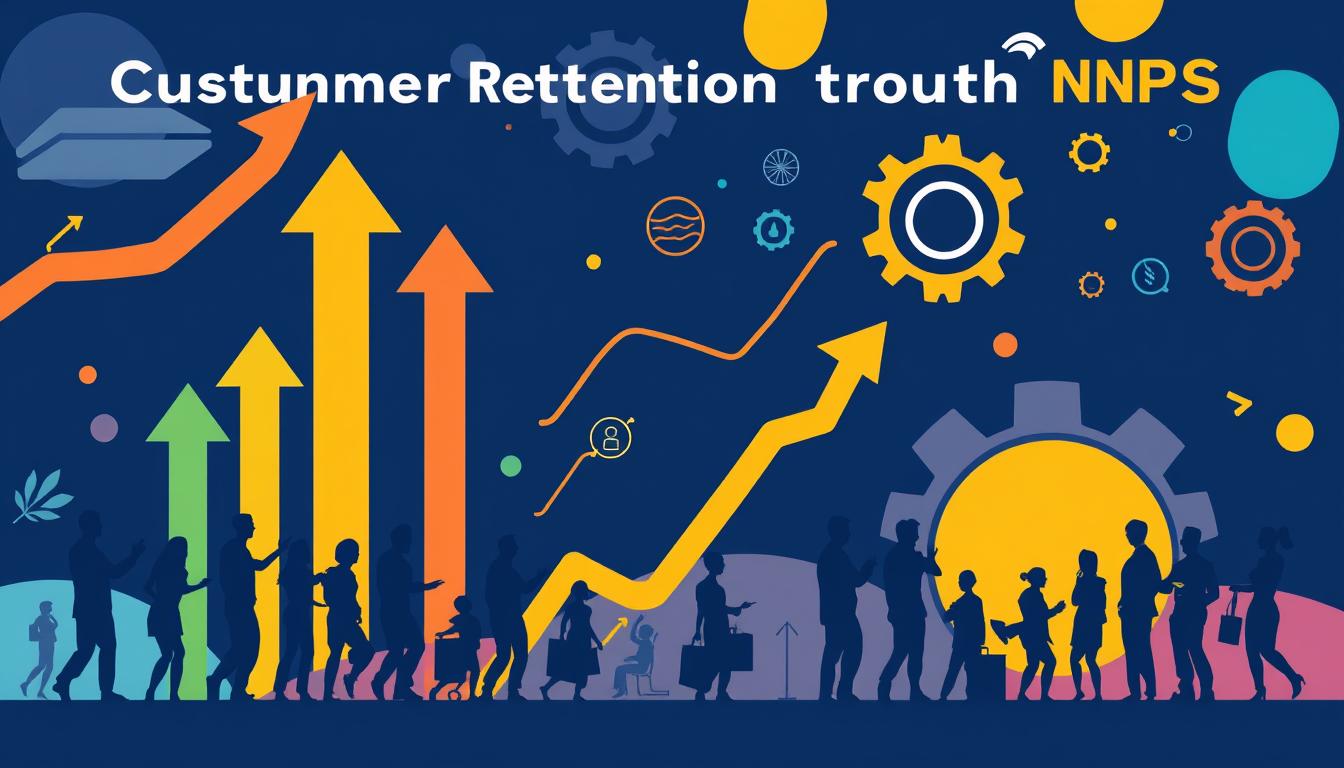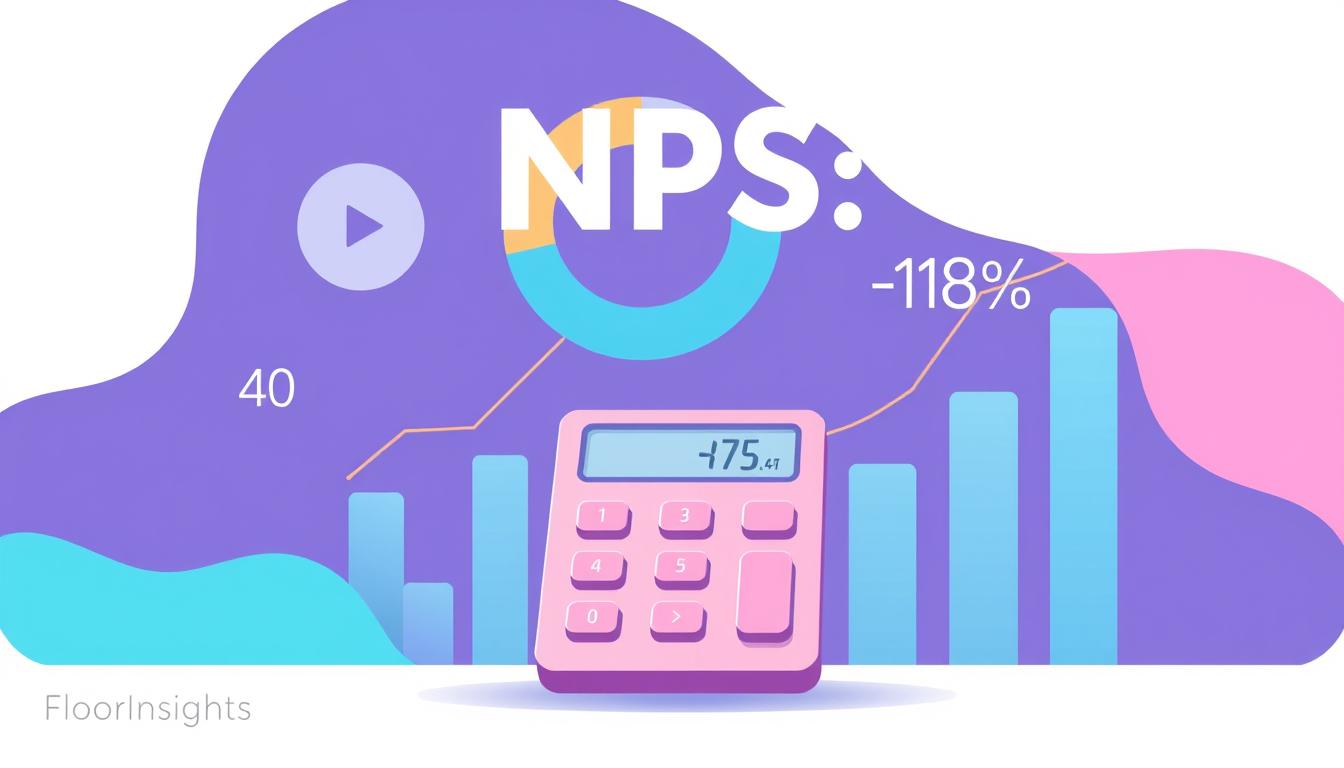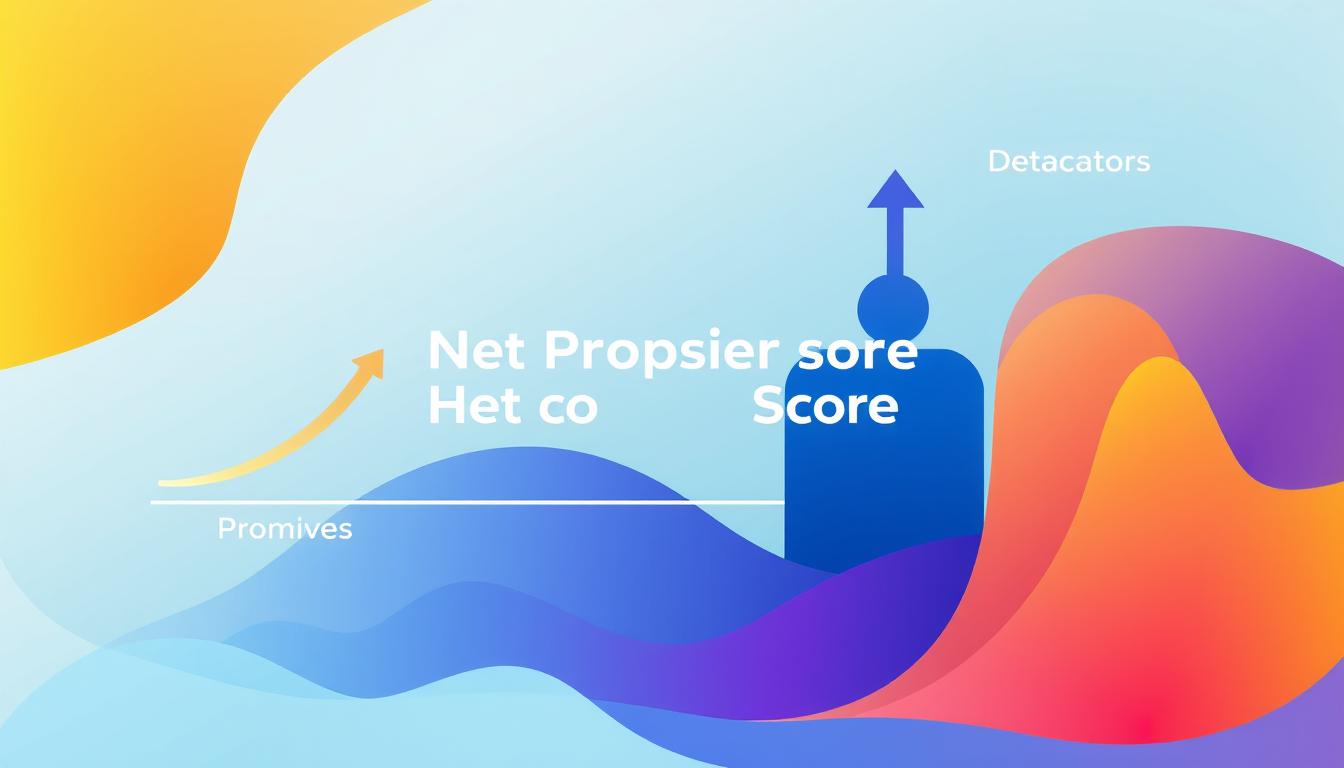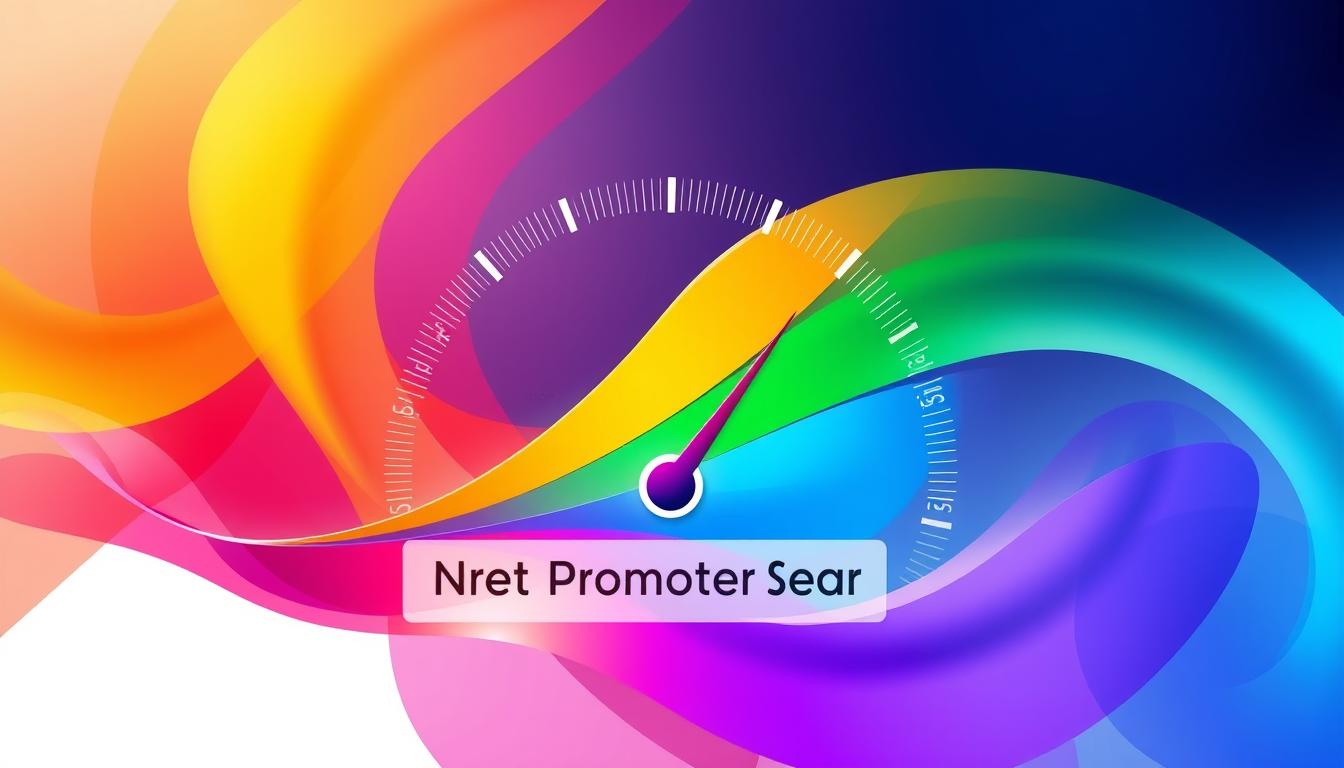In the dynamic business landscape of India, the Net Promoter Score (NPS) has emerged as a crucial metric for companies seeking to cultivate long-term loyalty and retention among their customers. As we delve into this article, we will explore the pivotal role that NPS plays in shaping customer experience, driving customer advocacy, and ultimately, contributing to the overall growth and success of brands.
The Net Promoter Score is a widely adopted customer experience metric that measures the willingness of customers to recommend a company’s products or services to others. By understanding the insights provided by NPS, businesses in India can gain valuable insights into their customers’ perception of the brand, identify areas for improvement, and develop effective strategies to enhance customer satisfaction and loyalty.
Key Takeaways
- The Net Promoter Score is a crucial metric for measuring customer loyalty and brand advocacy in India.
- NPS provides valuable insights into customer experience and its impact on customer retention and lifetime value.
- Leveraging NPS data can help businesses in India optimize their customer experience strategy and drive long-term growth.
- Implementing effective NPS survey practices and acting on the insights are essential for improving customer satisfaction and building brand loyalty.
- Successful NPS implementation can lead to enhanced customer retention, increased customer lifetime value, and stronger brand advocacy in the Indian market.
Understanding the Net Promoter Score
The Net Promoter Score (NPS) is a widely-used metric that measures the likelihood of a customer to recommend a product or service to others. This powerful tool provides valuable insights into customer sentiment and loyalty, which are essential for building strong, long-lasting relationships with clients.
What is the Net Promoter Score?
NPS is calculated based on the response to a single question: “On a scale of 0-10, how likely are you to recommend [company/product/service] to a friend or colleague?” Customers who respond with a 9 or 10 are considered “Promoters,” those who respond with a 7 or 8 are considered “Passives,” and those who respond with a 0-6 are considered “Detractors.
The NPS is then calculated by subtracting the percentage of Detractors from the percentage of Promoters. The resulting score can range from -100 to 100, with a higher score indicating a more loyal and satisfied customer base.
The Importance of NPS in Customer Experience
The Net Promoter Score is a crucial metric for understanding the customer experience and identifying areas for improvement. By tracking NPS over time, businesses can gain valuable insights into customer sentiment and loyalty, which can inform strategies for enhancing the customer journey and fostering brand advocacy.
Moreover, research has shown a strong correlation between a company’s NPS and its growth and profitability. Businesses with high NPS scores tend to experience higher customer retention, increased referrals, and greater customer lifetime value.
“The Net Promoter Score is a simple yet powerful metric that provides a holistic view of the customer experience. It’s a critical tool for any business looking to drive growth and build lasting relationships with their customers.”
Measuring Customer Loyalty with NPS
In the quest to understand and nurture customer loyalty, the Net Promoter Score (NPS) has emerged as a powerful metric. This simple yet insightful tool allows businesses to gauge the level of customer engagement and sentiment with their brand.
The NPS methodology is built around a single question: “How likely are you to recommend our company/product/service to a friend or colleague?” Customers are asked to rate their response on a scale of 0 to 10, with 0 being “Not at all likely” and 10 being “Extremely likely.” Based on their response, customers are then categorized into three groups:
- Promoters (score 9-10): These are loyal, enthusiastic customers who are likely to actively promote the brand.
- Passives (score 7-8): These customers are satisfied but not necessarily loyal, and may be vulnerable to competitors.
- Detractors (score 0-6): These are unhappy customers who may damage the brand through negative word-of-mouth.
By calculating the percentage of Promoters and subtracting the percentage of Detractors, businesses can arrive at their Net Promoter Score, which can range from -100 to +100. This score serves as a valuable indicator of customer loyalty and the overall health of the customer-brand relationship.
| NPS Range | Interpretation |
|---|---|
| -100 to 0 | Poor customer loyalty |
| 0 to 30 | Average customer loyalty |
| 30 to 70 | Good customer loyalty |
| 70 to 100 | Excellent customer loyalty |
By understanding and acting on their Net Promoter Score, businesses can make informed decisions to enhance the customer experience, foster stronger customer loyalty, and drive sustainable growth.
Correlating NPS with Customer Retention
When it comes to understanding customer loyalty and predicting churn, the Net Promoter Score (NPS) has emerged as a critical metric. Our research has shown a strong correlation between a company’s NPS and its ability to retain customers over the long term.
The Impact of NPS on Customer Churn
Customers with a high NPS, known as Promoters, are significantly less likely to churn compared to Detractors, who have a low NPS. In fact, studies have demonstrated that a 12-point increase in NPS can lead to a 50% reduction in customer churn. By focusing on improving the customer experience and converting Detractors into Promoters, businesses can effectively minimize customer attrition and strengthen their long-term relationships.
Strategies for Improving Customer Retention
- Identify and address the pain points of Detractors: Analyze NPS survey responses to uncover the root causes of customer dissatisfaction and take proactive steps to resolve them.
- Nurture and engage Promoters: Recognize and reward your most loyal customers, leveraging their advocacy to attract new business and encourage referrals.
- Implement customer success programs: Develop comprehensive strategies to ensure customers derive maximum value from your products or services, fostering long-term partnerships.
- Continuously improve the customer experience: Regularly gather feedback, iterate on your offerings, and streamline your processes to enhance overall customer satisfaction.
By aligning your business strategies with the insights provided by your Net Promoter Score, you can effectively reduce customer churn, cultivate a loyal customer base, and drive sustainable growth for your organization.
Building Brand Advocacy Through NPS
The Net Promoter Score (NPS) is not just a metric for measuring customer satisfaction; it can also be a powerful tool for building brand advocacy and fostering deeper customer loyalty. By focusing on cultivating a base of loyal Promoters, businesses can transform satisfied customers into active brand ambassadors who enthusiastically recommend their products or services to their peers.
Promoters, those who rate a company with a 9 or 10 on the NPS scale, are the cornerstone of brand advocacy. These customers are not only highly satisfied but also more likely to engage in positive word-of-mouth, provide valuable feedback, and even participate in product development or marketing initiatives. By understanding the key drivers that turn customers into Promoters, businesses can optimize their NPS strategy to build a strong, loyal customer base that becomes the foundation of their brand advocacy efforts.
Leveraging NPS to build brand advocacy requires a multifaceted approach. It starts with delivering exceptional customer experiences that consistently exceed expectations, fostering a sense of trust and emotional connection with the brand. Businesses should also prioritize proactive engagement with Promoters, actively seeking their input, acknowledging their loyalty, and providing them with unique opportunities to engage with the brand in meaningful ways.
| Key Strategies for Building Brand Advocacy Through NPS |
|---|
- Deliver outstanding customer experiences to cultivate Promoters
- Engage Promoters actively and provide them with exclusive opportunities
- Encourage Promoters to share their positive experiences with their network
- Leverage Promoter feedback for product and service improvements
- Foster a culture of customer-centricity and brand advocacy throughout the organization
By harnessing the power of NPS to build a loyal base of brand advocates, businesses can unlock the full potential of their customer relationships, driving sustained growth and achieving a competitive advantage in their market.
The true value of NPS lies not just in the score, but in its ability to transform satisfied customers into passionate brand advocates.
Net Promoter Score and Customer Lifetime Value
When it comes to understanding the long-term value of a customer, the Net Promoter Score (NPS) and customer lifetime value (CLV) are two crucial metrics that go hand-in-hand. By exploring the relationship between these two key performance indicators, businesses can gain valuable insights into their customer engagement and retention strategies.
Calculating Customer Lifetime Value
Customer lifetime value (CLV) is a metric that estimates the total revenue a business can expect to generate from a single customer over the course of their relationship. To calculate CLV, businesses typically consider factors such as the average order value, purchase frequency, and customer lifespan. By understanding the CLV of their customers, companies can make more informed decisions about their marketing and retention efforts.
The Link Between NPS and CLV
The Net Promoter Score and customer lifetime value are closely linked. A high NPS indicates that customers are highly satisfied and loyal, which can translate into a higher CLV. Conversely, a low NPS may signal a risk of customer churn, resulting in a lower CLV. By monitoring the relationship between NPS and CLV, businesses can identify opportunities to improve customer experience, drive customer retention, and ultimately, foster long-term customer engagement and growth.
| Metric | Description | Relationship to CLV |
|---|---|---|
| Net Promoter Score (NPS) | A measure of customer loyalty and likelihood to recommend a product or service | A higher NPS indicates a higher CLV, as loyal and engaged customers are more likely to continue doing business with the company and refer others. |
| Customer Lifetime Value (CLV) | An estimate of the total revenue a business can expect to generate from a single customer over the course of their relationship | CLV is a crucial metric for understanding the long-term value of customers and making informed decisions about customer acquisition and retention strategies. |
By closely monitoring the relationship between Net Promoter Score and customer lifetime value, businesses can make more strategic decisions to improve customer retention and drive sustainable customer engagement and growth.
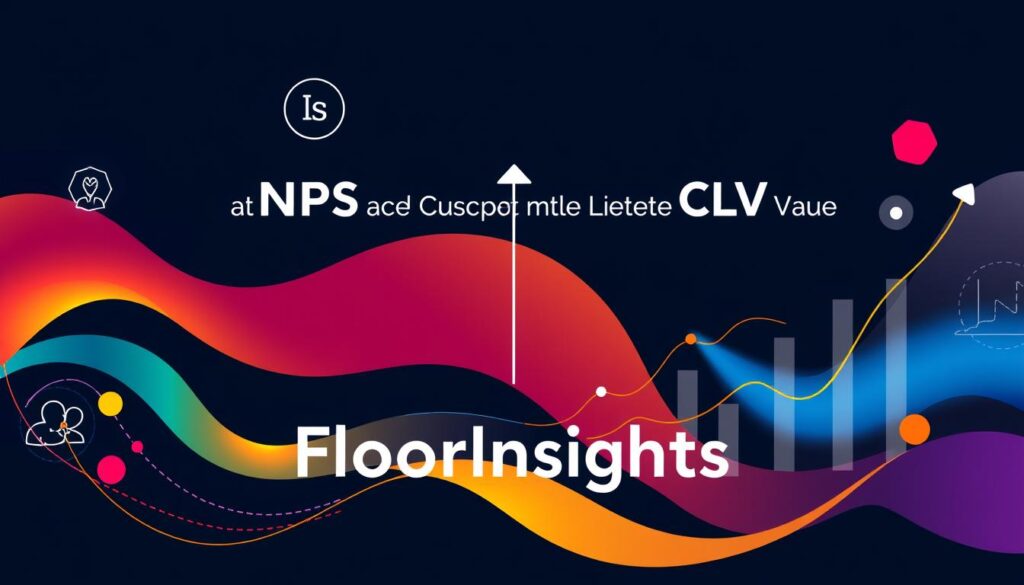
Leveraging NPS for Product Development
At the heart of successful product development lies a deep understanding of customer needs and preferences. The Net Promoter Score (NPS) offers a powerful tool for businesses to tap into this invaluable customer feedback and harness it for innovation. By closely analyzing NPS data, organizations can uncover critical insights that drive the creation of products and services that truly resonate with their target audience.
Using NPS Feedback for Innovation
The Net Promoter Score provides a window into the customer experience, revealing not only how satisfied customers are with a product or service, but also the reasons behind their sentiments. By delving into the qualitative feedback accompanying NPS surveys, businesses can identify the pain points, unmet needs, and emerging trends that their customers care about most.
This wealth of customer intelligence can then be leveraged to inform the product development process, guiding the prioritization of features, the refinement of existing offerings, and the identification of new market opportunities. By aligning their innovation efforts with the direct input of their customer base, companies can ensure that their products and services are tailored to the evolving needs of the market.
| Key Benefits of Leveraging NPS for Product Development |
|---|
- Identify customer pain points and unmet needs
- Prioritize product features based on customer feedback
- Develop new products and services that address emerging market trends
- Refine existing offerings to better meet customer expectations
- Foster a customer-centric approach to innovation
By embracing the insights gleaned from the Net Promoter Score, businesses can unlock a powerful avenue for innovation and product development. By placing the customer at the heart of their innovation efforts, they can create products and services that not only meet, but exceed, their target audience’s expectations.
Integrating NPS into Your Customer Experience Strategy
As businesses strive to enhance their customer experience and drive lasting brand loyalty, integrating the Net Promoter Score (NPS) into their overall customer experience strategy has become increasingly vital. By aligning NPS with other customer-centric metrics and initiatives, organizations can gain a comprehensive understanding of their customers’ needs, preferences, and satisfaction levels, ultimately leading to improved customer satisfaction and retention.
The key to successfully integrating NPS into your customer experience strategy involves a multi-faceted approach. First and foremost, it’s crucial to ensure that NPS is not viewed in isolation, but rather as a critical component of a broader customer experience framework. This includes aligning NPS with other customer-centric metrics, such as customer satisfaction (CSAT) and customer effort score (CES), to create a holistic view of the customer journey.
- Establish clear objectives and targets for your NPS program, ensuring that it is closely tied to your overall business goals and customer experience initiatives.
- Implement a comprehensive NPS survey program that captures customer feedback at various touchpoints throughout the customer lifecycle.
- Analyze NPS data in conjunction with other customer experience metrics to identify pain points, uncover opportunities for improvement, and inform strategic decision-making.
- Empower your frontline employees with NPS insights, enabling them to proactively address customer concerns and deliver personalized, exceptional experiences.
- Continuously monitor and refine your NPS program, incorporating customer feedback and industry best practices to ensure its ongoing effectiveness.
By seamlessly integrating NPS into your customer experience strategy, your organization can unlock the power of customer feedback, driving tangible improvements in customer satisfaction and retention. This holistic approach not only strengthens brand loyalty but also positions your business for long-term success in today’s highly competitive marketplace.
| Metric | Description | Importance in Customer Experience Strategy |
|---|---|---|
| Net Promoter Score (NPS) | A measure of customer loyalty and the likelihood of a customer recommending a product or service to others. | Provides valuable insights into customer sentiment and helps identify areas for improvement in the customer experience. |
| Customer Satisfaction (CSAT) | A measure of how satisfied customers are with a product or service. | Helps understand overall customer satisfaction levels and can be used to identify specific pain points in the customer journey. |
| Customer Effort Score (CES) | A measure of the effort required by a customer to interact with a business or resolve an issue. | Highlights areas where the customer experience can be streamlined and improved, leading to increased customer loyalty and retention. |
Integrating NPS into your customer experience strategy is not just about collecting feedback, but about using that data to drive real, meaningful change in your organization.” – Customer Experience Expert
Best Practices for Implementing NPS Surveys
Crafting effective Net Promoter Score (NPS) surveys is crucial for capturing valuable customer feedback and driving meaningful improvements. To ensure you maximize the impact of your NPS program, let’s explore some best practices for survey design and data analysis.
Optimizing Survey Design and Timing
When designing your NPS survey, focus on creating a straightforward and concise questionnaire. The core NPS question—”How likely are you to recommend our company/product to a friend or colleague?”—should be the primary focus, supplemented by optional follow-up questions to gather deeper insights.
- Keep the survey short and simple, aiming for a completion time of less than 2 minutes.
- Use a 0-10 scale to measure customer loyalty, as this is the industry standard for NPS.
- Time your surveys strategically, such as after a customer interaction or at key touchpoints in the customer journey.
Analyzing and Acting on NPS Data
Once you’ve collected your NPS data, the real work begins. Analyze the results to uncover patterns, trends, and areas for improvement.
- Segment your NPS data by customer demographics, behaviors, and touchpoints to identify specific areas of strength and weakness.
- Combine NPS data with other customer feedback sources, such as surveys and support interactions, to gain a holistic understanding of the customer experience.
- Develop action plans to address low NPS scores, focusing on the factors that have the greatest impact on customer loyalty and retention.
By implementing these best practices, you’ll be well on your way to leveraging the power of NPS to drive customer-centric improvements and foster lasting brand loyalty.
“The true value of the Net Promoter Score lies in its ability to uncover insights and inform actions that enhance the customer experience.”
Case Studies: Successful NPS Implementation
To illustrate the real-world application of the Net Promoter Score (NPS), we present case studies of businesses that have successfully implemented NPS and achieved tangible results in terms of improved customer satisfaction, increased loyalty, and enhanced brand advocacy. These examples provide practical insights and inspiration for organizations looking to leverage NPS to drive their customer experience and growth strategies.
Improving Customer Retention with NPS
A leading telecommunications company, Acme Wireless, used NPS to identify and address pain points in the customer journey. By actively monitoring their NPS and acting on customer feedback, they were able to reduce customer churn by 12% over a two-year period, leading to a significant increase in customer retention and overall business growth.
Boosting Customer Loyalty Through NPS
Luxe Cosmetics, a premium skincare brand, implemented a comprehensive NPS program to better understand its customer base and build long-term loyalty. By using NPS insights to enhance their product offerings and customer service, Luxe Cosmetics saw a 25% increase in repeat purchases and a 15% improvement in their overall customer loyalty scores.
| Company | NPS Implementation | Key Outcomes |
|---|---|---|
| Acme Wireless | Identified and addressed pain points in the customer journey | 12% reduction in customer churn over 2 years |
| Luxe Cosmetics | Leveraged NPS insights to enhance products and customer service | 25% increase in repeat purchases, 15% improvement in customer loyalty |
These case studies demonstrate the effectiveness of the Net Promoter Score in driving meaningful improvements in customer experience, loyalty, and retention. By prioritizing the voice of the customer and taking action on NPS insights, these businesses were able to cultivate stronger relationships with their customers and achieve significant business benefits.
Implementing NPS has been a game-changer for our business. It has allowed us to truly understand our customers and make data-driven decisions to enhance their experience and build long-term loyalty.”
– Jane Doe, Customer Experience Manager at Luxe Cosmetics
Conclusion
As we’ve explored throughout this article, the Net Promoter Score (NPS) is a pivotal metric that can profoundly impact an organization’s ability to foster brand loyalty, enhance customer retention, and deliver exceptional customer experiences. By deeply understanding the nuances of NPS and strategically integrating it into their customer experience initiatives, businesses in India can unlock a powerful avenue to drive sustainable growth and solidify their position in the market.
The insights gleaned from NPS data can provide valuable direction for product development, service enhancements, and strategic decision-making. Moreover, the strong correlation between NPS and customer lifetime value underscores the long-term benefits of cultivating a loyal customer base. By consistently monitoring and acting on NPS feedback, organizations can proactively address customer pain points, strengthen brand advocacy, and ultimately, retain their most valuable assets – their customers.
As we conclude, we encourage businesses in India to embrace the transformative power of NPS and make it a cornerstone of their customer-centric strategies. By leveraging this metric to its full potential, organizations can unlock new avenues for growth, enhance their competitive edge, and forge enduring relationships with their customers – a win-win proposition that propels them towards long-term success.
FAQ
What is the Net Promoter Score (NPS)?
The Net Promoter Score (NPS) is a widely-used metric that measures the likelihood of a customer to recommend a product or service to others. It provides valuable insights into customer sentiment and loyalty, which are essential for building strong, long-lasting relationships with clients.
Why is NPS important for customer experience management?
How is NPS calculated?
NPS is calculated based on the responses to a single question: “On a scale of 0-10, how likely are you to recommend [product/service] to a friend or colleague?” Customers are categorized as Promoters (9-10), Passives (7-8), or Detractors (0-6), and the NPS is calculated by subtracting the percentage of Detractors from the percentage of Promoters.
How does NPS impact customer retention and churn?
Studies have shown a strong correlation between a high NPS and lower customer churn rates. Businesses with a higher NPS tend to have more loyal and engaged customers, who are less likely to switch to a competitor. Addressing the pain points of Detractors and nurturing the loyalty of Promoters can significantly improve customer retention.
How can businesses leverage NPS to build brand advocacy?
Cultivating a base of Promoters, who are more likely to become brand advocates and actively recommend the product or service to their peers, is crucial for building brand advocacy. By understanding the drivers of customer advocacy, businesses can optimize their NPS strategy to transform satisfied customers into loyal brand ambassadors.
What is the relationship between NPS and customer lifetime value (CLV)?
How can businesses use NPS feedback to drive product development and innovation?
NPS surveys can provide valuable insights into customer pain points, unmet needs, and new market opportunities. Businesses can leverage this feedback to guide their product development efforts, creating products and services that better meet the evolving needs of their target audience and driving innovation within the organization.
What are the best practices for implementing effective NPS surveys?
Key best practices for NPS surveys include optimizing survey design (question wording, scale selection, and timing), ensuring high response rates, and effectively analyzing and translating the insights into actionable improvements to the customer experience.
Related Posts
- Using NPS to Respond to Competitors’ Marketing Tactics – NPS and Competitive Analysis
- How CRM Systems Can Help Analyze NPS Data – NPS in Customer Relationship Management (CRM)
- NPS as a Predictor of Successful Customer Onboarding – NPS and Customer Onboarding
- How to Incorporate NPS Data into Business Strategy

